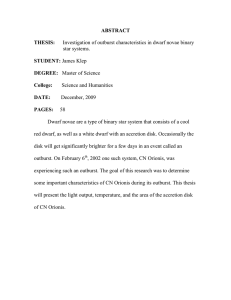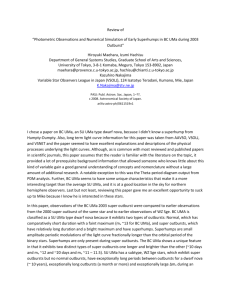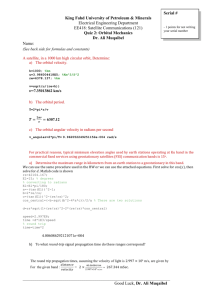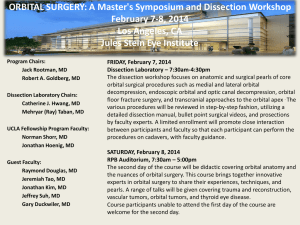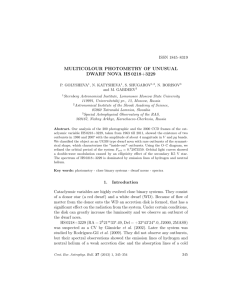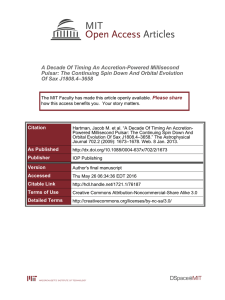The shape of long outbursts in U Gem type dwarf novae
advertisement
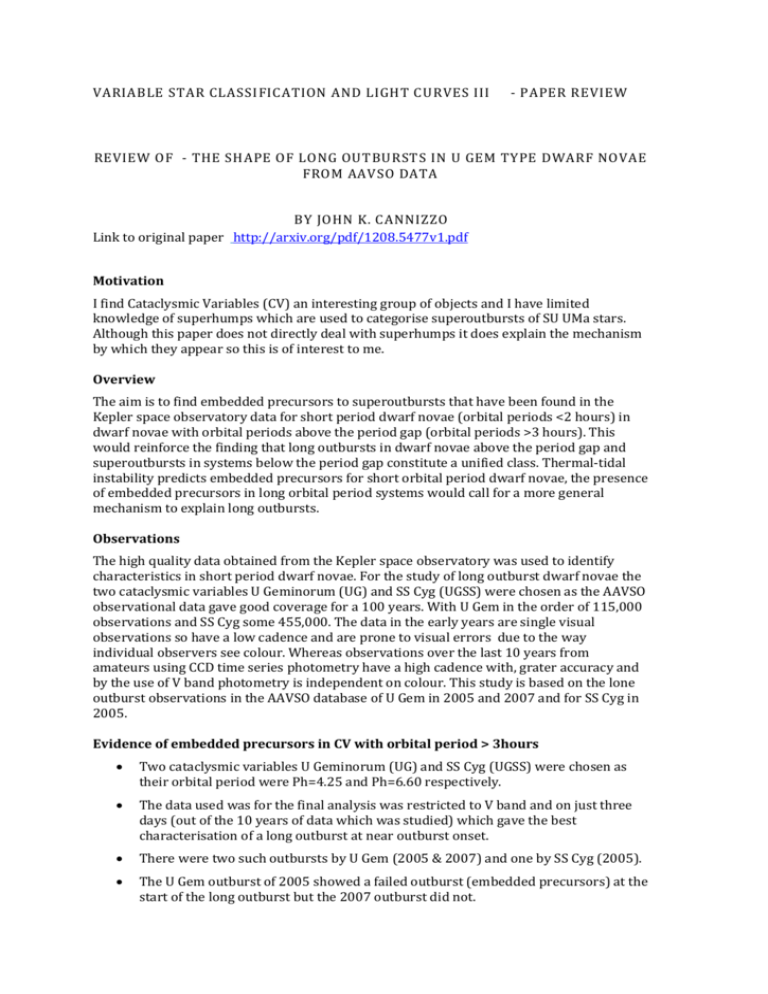
VARIABLE STAR CLASSIFICATION AND LIGHT CURVES III - PAPER REVIEW REVIEW OF - THE SHAPE OF LONG OUTBURSTS IN U GEM TYPE DWARF NOVAE FROM AAVSO DATA BY JOHN K. CANNIZZO Link to original paper http://arxiv.org/pdf/1208.5477v1.pdf Motivation I find Cataclysmic Variables (CV) an interesting group of objects and I have limited knowledge of superhumps which are used to categorise superoutbursts of SU UMa stars. Although this paper does not directly deal with superhumps it does explain the mechanism by which they appear so this is of interest to me. Overview The aim is to find embedded precursors to superoutbursts that have been found in the Kepler space observatory data for short period dwarf novae (orbital periods <2 hours) in dwarf novae with orbital periods above the period gap (orbital periods >3 hours). This would reinforce the finding that long outbursts in dwarf novae above the period gap and superoutbursts in systems below the period gap constitute a unified class. Thermal-tidal instability predicts embedded precursors for short orbital period dwarf novae, the presence of embedded precursors in long orbital period systems would call for a more general mechanism to explain long outbursts. Observations The high quality data obtained from the Kepler space observatory was used to identify characteristics in short period dwarf novae. For the study of long outburst dwarf novae the two cataclysmic variables U Geminorum (UG) and SS Cyg (UGSS) were chosen as the AAVSO observational data gave good coverage for a 100 years. With U Gem in the order of 115,000 observations and SS Cyg some 455,000. The data in the early years are single visual observations so have a low cadence and are prone to visual errors due to the way individual observers see colour. Whereas observations over the last 10 years from amateurs using CCD time series photometry have a high cadence with, grater accuracy and by the use of V band photometry is independent on colour. This study is based on the lone outburst observations in the AAVSO database of U Gem in 2005 and 2007 and for SS Cyg in 2005. Evidence of embedded precursors in CV with orbital period > 3hours Two cataclysmic variables U Geminorum (UG) and SS Cyg (UGSS) were chosen as their orbital period were Ph=4.25 and Ph=6.60 respectively. The data used was for the final analysis was restricted to V band and on just three days (out of the 10 years of data which was studied) which gave the best characterisation of a long outburst at near outburst onset. There were two such outbursts by U Gem (2005 & 2007) and one by SS Cyg (2005). The U Gem outburst of 2005 showed a failed outburst (embedded precursors) at the start of the long outburst but the 2007 outburst did not. Implications In considering the mechanisms that cause outbursts in CV's whose orbital period are either side of the periods gap have been considered to be independent. This paper argues that the presence of an embedded precursor found in long outbursts calls for a more general mechanism to explain long outbursts which spans the period gap. Conclusions I found this paper very interesting and it is clear from the analysis of the presence of embedded precursors in two of the three long outbursts studied, that there is a relationship in CV outbursts that spans the period gap. I did not understand the relationship of the thermal tidal instability model and the accretion disk thermal limit cycle instability but that, I feel, was down to my limited knowledge of this subject. Some follow up study on the thermal, tidal instability and accretion discs will help me understand this more. Graham Darlington 13th February 2013

